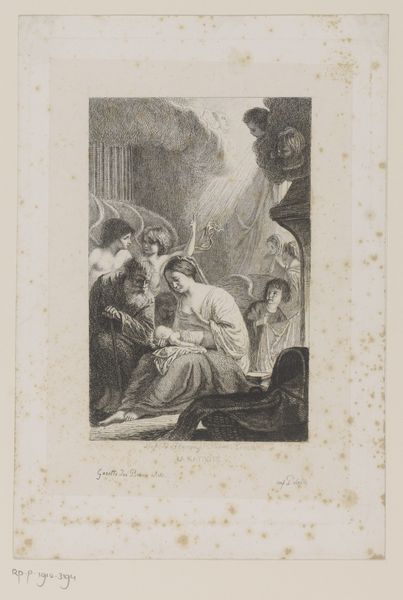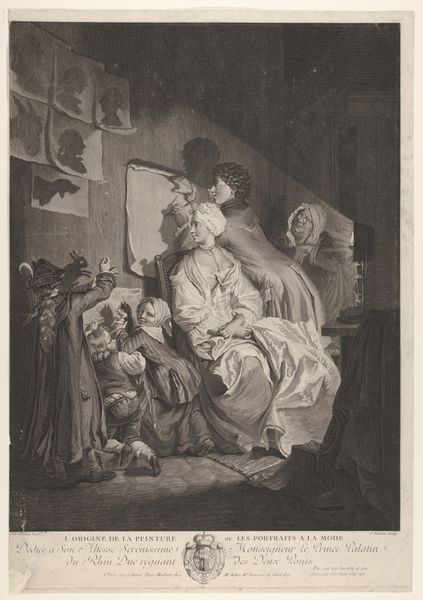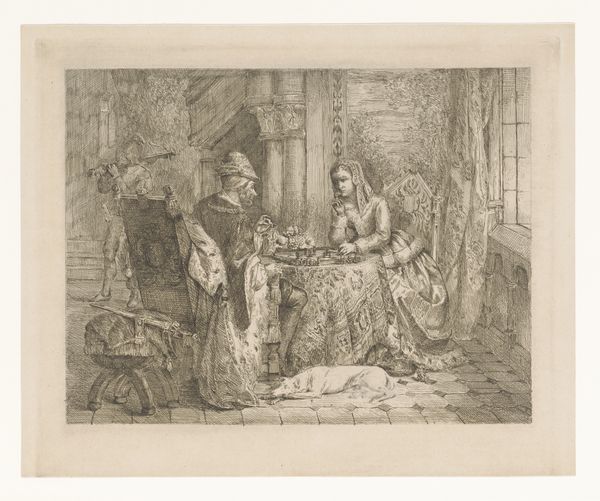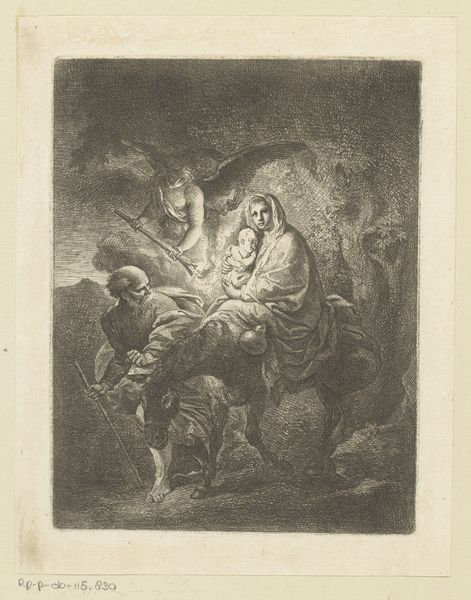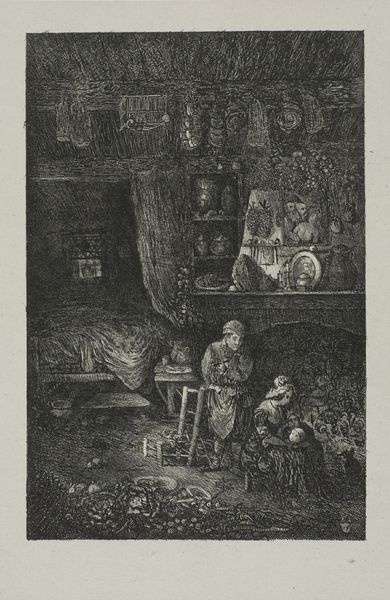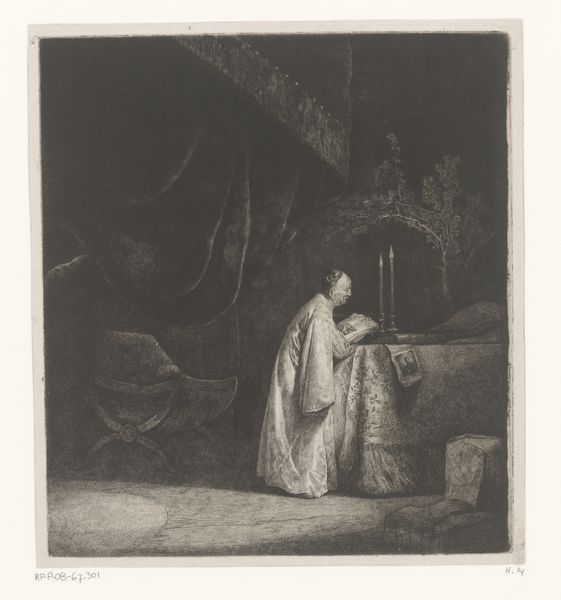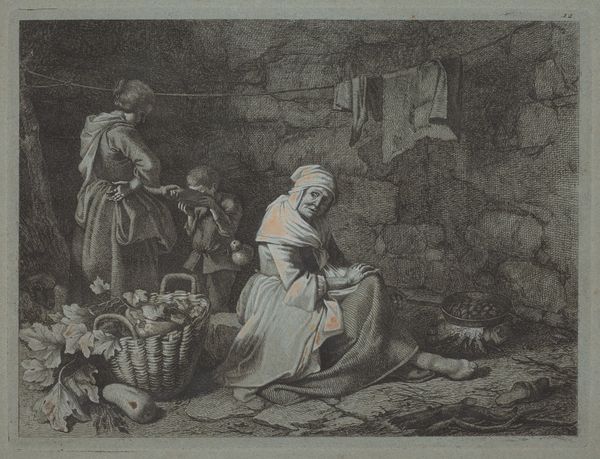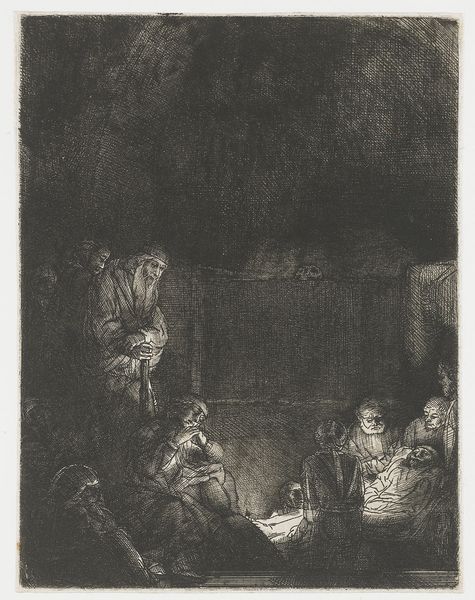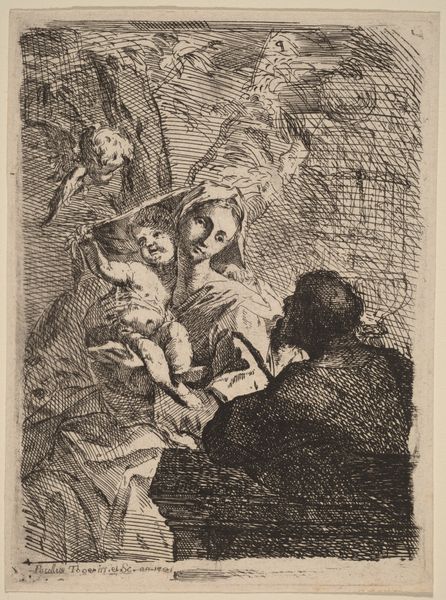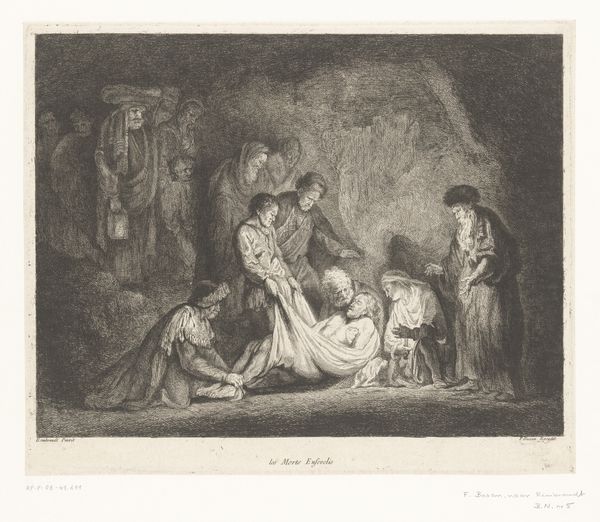
drawing, print, graphite, charcoal
#
portrait
#
drawing
#
narrative-art
# print
#
figuration
#
pencil drawing
#
line
#
graphite
#
genre-painting
#
charcoal
#
charcoal
#
graphite
Dimensions: Sheet: 17 1/4 × 11 1/4 in. (43.8 × 28.5 cm)
Copyright: Public Domain
Curator: Here we have Célestin Nanteuil’s “The Potion,” created around 1860. It’s currently housed at the Metropolitan Museum of Art. Editor: The charcoal immediately strikes me. The scene is steeped in shadow, but there is a really interesting textural interplay of dark and light. What can you tell me about its material existence? Curator: This is a lithograph, translating a detailed charcoal and graphite drawing into a print form, which meant that it could reach a wider audience than a unique drawing could. That's important when we consider the visual narratives of marginalized people. Editor: Precisely! It allows a material distribution of ideas, like spells, potions. Here it clearly serves a genre painting depicting, as far as I can see, the dynamic between an old crone brewing a potion and a more privileged patron. There is a stark juxtaposition between their worlds and presumed access to different resources. Curator: Absolutely. The narrative invites questions about the dynamics of power and belief. How does Nanteuil portray women in particular in this era? Is it about the exoticisation or denigration of older women, or something else? Editor: The meticulous crafting is certainly loaded with commentary, no? Every smudge seems deliberate, constructing a space brimming with what one might call superstitious or archaic production, juxtaposed with the young lady's need. Curator: Look at the way Nanteuil uses light and shadow. The woman’s youthfulness practically glows in the dim setting. Yet, we should critically consider how society treats ageing. The so-called witch becomes a marginalized figure forced into unconventional exchanges. Editor: Agreed. The composition leads our eye to the cauldron—the material heart of the supposed transformation—but I find the young girl to be interesting, it shows the material necessities some had that would have been forbidden, at the time, for women such as the so-called witch. I am looking at it from a labor point of view, which speaks to me a lot. Curator: Thank you, this perspective illuminates further layers of societal judgment cast onto women during that period, even if these dynamics seem quite distant to a 21st century understanding. Editor: Exactly. Analyzing how materiality interacts with history challenges the notion of neutral depictions. What matters, is our perspective shifts about consumption in these dialogues.
Comments
No comments
Be the first to comment and join the conversation on the ultimate creative platform.

